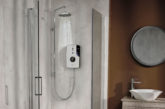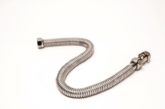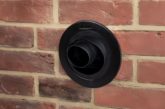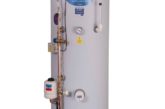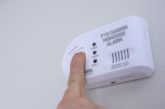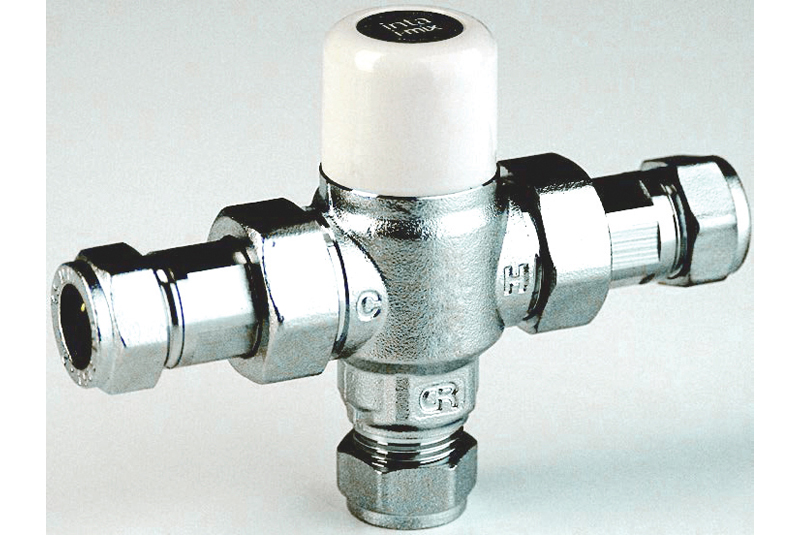
It is almost 10 years since the TMV2 scheme became part of building regulations in England and Wales, yet there is still confusion around when to use TMV2 and TMV3 valves. Stuart Reynolds, Head of Product and Marketing at AKW, explains when and where to use thermostatic mixer valves (TMVs) to reduce the risk of injury and possible legal claims.
TMVs are ideal for eradicating scalding, particularly in households that contain vulnerable people – which continues to be an ever-increasing proportion of the UK’s homes. Due to their typically thinner skin, approximately 2,000 children are admitted to A&E following bath water scalds every year and in young children, exposure to hot water above 60°C can take as little as one second for them to receive full thickness burns, and 10 seconds if the water is 55°C. Yet, hot water in the average home comes out of the tap at hotter than 60°C, with some as high as 80°C. However, with the right valve in place these scald injuries are almost always avoidable.
Section 3.65 of the 2010 Building Regulations Part G3 (which was revised in 2015 and 2016) covers the prevention of scalding and states: “The hot water supply temperature to a bath should be limited to a maximum of 48°C by use of an in-line blending valve or other appropriate temperature control device, with a maximum temperature stop and a suitable arrangement of pipework.”
To maintain 48°C at point of exit, logic would dictate that it would be better to store water at cooler temperatures to avoid scalding, however the risk of legionella increases as water temperature drops. With this in mind, tap water temperature can be regulated and scalding prevented if TMV2 and TMV3 valves are fitted. However, TMV2 and TMV3-approved valves offer different levels of protection, making them suitable for different applications.
When to use TMV2 valves
The TMV2 scheme aims to control hot water temperatures in predominantly domestic/lower risk bathrooms, especially on baths and bidets, which are considered to be high risk areas. According to a BRE information paper on the subject, TMV2 valve installation is suggested as best practice in private dwellings and housing associations. However, in hotels and in schools and nurseries, TMV2 installation is recommended by legislation or authoritative guidance on hand basins and required by legislation on any showers or bathrooms.
All TMV2s should meet the requirements ofBS EN 1111 and/or BSEN 1287 as a minimum performance level, as well as the additional requirements of the TMV2 Scheme. Typically, these valves work on pressures of between 0.1 to 5 bar. Valves conforming to these standards should be able to maintain temperature stability at all times and will shut down safely in case of cold water failure to protect the user from scalding.
TMV3 – higher level protection
TMV3-approved valves are certified against the requirements of the NHS Estates document D 08 and as such, offer a higher level of protection than TMV2 valves. According to the BRE, TMV3 valve installation is recommended by legislation or authoritative guidance in NHS and private nursing homes, in private hospitals and on hand basins located at schools and nurseries for the severely disabled.
TMV3 installation is required by legislation in all young persons’ care homes and NHS hospitals and on the showers and baths located in schools and nurseries for the severely disabled. They can however be used in domestic installations, if deemed necessary following a risk assessment, but only if the pressure in the property is sufficient.
When the lines are blurred
The BRE’s recommendation is that in all installations, a risk assessment should be carried out to establish the requirements of the individuals of the household and the subsequent level of risk of scalding by hot water.Depending on these results, installers might find themselves fitting TMV3 valves in domestic dwellings, to ensure the safety of the end user.
For those installers working in healthcare, the NHS, care home or vulnerable domestic settings, AKW has a range of products available. These include the Arka Thermostatic Mixer Shower, the TMV3 Thermostatic Wash Basin Mixer Tap and TMV3-approved blending valves. In addition, for those working on lower risk installations, AKW also offers the Arka Cool Touch Thermostatic Mixer Shower, Vettora Thermostatic Mixer Shower and TMV2-approved blending valves.
Scalding injuries from baths, taps and showers are entirely avoidable if the appropriate solutions are used, so make sure you know which TMV to use and when, to help make the UK’s bathrooms safer places for the more vulnerable.








